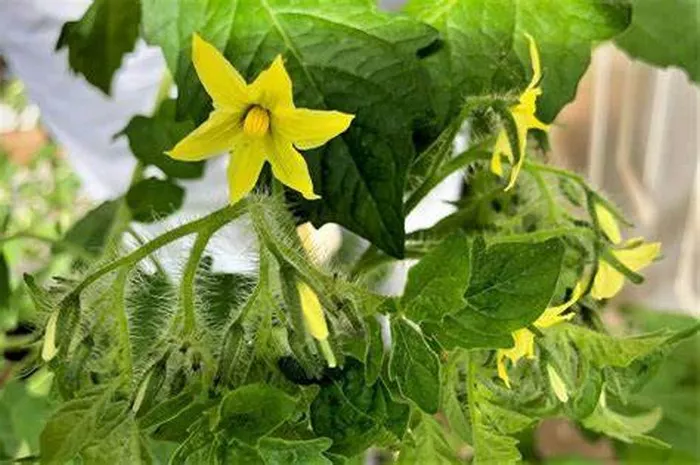Tomatoes, often regarded as the crown jewel of home gardens, owe much of their success to effective pollination. While nature usually handles this task through wind and insects, there are times when human intervention becomes necessary, particularly in greenhouse settings or when growing certain tomato varieties. Understanding how to pollinate tomato flowers ensures a bountiful harvest and can be a rewarding aspect of gardening. In this comprehensive guide, we delve into the intricacies of tomato flower pollination, providing precise answers to common questions and offering practical techniques for success.
1. Understanding Tomato Flower Anatomy
Before delving into the art of pollination, it’s crucial to understand the anatomy of a tomato flower. Each flower consists of several key components:
Stigma: The receptive part of the female reproductive system where pollen is deposited.
Style: Connects the stigma to the ovary, allowing pollen to travel down to fertilize the ovules.
Ovary: Contains the ovules, which develop into seeds once fertilized.
Anthers: The male reproductive organs that produce and release pollen.
Filament: Supports the anthers and positions them to release pollen onto visiting pollinators.
2. Identifying Pollination Methods
Tomato flowers are self-pollinating, meaning they possess both male and female reproductive organs within the same flower. However, environmental conditions or cultivation practices may hinder natural pollination. In such cases, gardeners can employ various pollination methods:
Hand Pollination: A manual method where pollen is transferred from the anthers to the stigma using a small brush or cotton swab.
Wind Assistance: Gentle shaking or tapping of tomato plants can simulate wind, aiding in pollen dispersal.
Assisted Insect Pollination: Introducing pollinators like bumblebees or utilizing vibrating devices to mimic insect activity can enhance pollination rates.
3. Optimal Timing for Pollination
Timing is critical when pollinating tomato flowers. The ideal time to pollinate is when flowers are fully open and pollen is readily available. Keep an eye on your tomato plants and look for the following indicators:
Fully Open Flowers: Look for flowers that have fully opened petals, exposing the anthers and stigma.
Visible Pollen: Pollen should be visibly present on the anthers, appearing as a fine yellow powder.
Morning Hours: Pollination is often most successful during the morning hours when pollen is fresh and abundant.
4. Mastering Hand Pollination Techniques
Hand pollination is a precise technique that allows gardeners to exert control over the pollination process. Follow these steps for successful hand pollination:
Selecting the Right Tools: Use a small brush, cotton swab, or even your finger to transfer pollen.
Gently Collecting Pollen: Carefully brush or tap the anthers to collect pollen onto your chosen pollination tool.
Applying Pollen to Stigma: Delicately transfer the collected pollen onto the stigma of the same flower or another flower to facilitate fertilization.
Repeat as Needed: Continue hand pollination across multiple flowers to ensure thorough pollination and maximize fruit set.
5. Enhancing Natural Pollination
While hand pollination can be effective, encouraging natural pollination is often the preferred method for many gardeners. Here are some strategies to enhance natural pollination:
Attract Pollinators: Planting companion flowers like marigolds or allowing nearby wildflowers to flourish can attract bees and other pollinators to your garden.
Provide Habitat: Create a pollinator-friendly environment by incorporating nesting sites and water sources for bees and other beneficial insects.
Minimize Pesticide Use: Pesticides can harm pollinators, so use them sparingly and opt for organic alternatives when possible.
6. Troubleshooting Pollination Issues
Even with the best intentions, pollination efforts may sometimes fall short. Understanding common issues and their solutions can help mitigate potential problems:
Poor Weather Conditions: High humidity or extreme temperatures can affect pollen viability. Consider hand pollination during adverse weather conditions.
Low Pollinator Activity: If natural pollinators are scarce, consider introducing bumblebees to your garden or manually assisting with pollination.
Overcrowding: Dense foliage can hinder pollinator access to flowers. Prune excess foliage to improve airflow and visibility of flowers.
7. Celebrating Successful Pollination
After diligent pollination efforts, it’s time to celebrate the fruits of your labor. Keep an eye on pollinated flowers and watch as they develop into plump, juicy tomatoes. Here are some signs of successful pollination:
Fruit Development: Within a few weeks of pollination, you should notice small green tomatoes forming at the base of the pollinated flowers.
Healthy Growth: Pollinated flowers typically exhibit robust growth compared to unpollinated ones.
Increased Yield: A successful pollination process often results in higher fruit set and overall yield from your tomato plants.
Conclusion
Mastering the art of tomato flower pollination is a rewarding endeavor for any gardener. Whether you opt for hand pollination techniques or prefer to enhance natural pollination, understanding the anatomy of tomato flowers and the factors influencing successful pollination is essential. By employing the strategies outlined in this guide, you can ensure a bountiful harvest of delicious, homegrown tomatoes year after year. Happy gardening!


